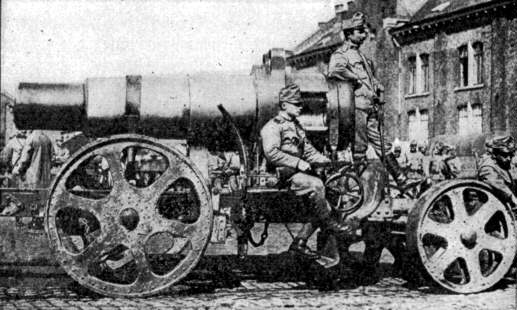Pray there won't be a need for more
Sunday, November 09, 2008 by JOHN DAVIS
Tuesday is celebrated as Veterans Day. If noticed at all, there are few who pause to reflect on, or wonder why, such a holiday was created.

I own a print of the painting titled "Eleven O'clock, November 11th, 1918." That is the date of Armistice Day, the end of the First World War.
Against a heavily shelled, gray-brown, moonscape field, with mere sticks remaining of what once were trees, stand two American soldiers facing the viewer, as though looking off into the distance. They stand on the parapet of a trench, visible from the shins upward. There is no glory in their expression, only resignation that now it is all over.
The power of the picture is its simplicity. They stand above the lifeless ground in daylight, with no further fear of bullets. One significantly holds his helmet in his hand, for no longer will debris and shrapnel fall from above. Their gas masks are cased, for now they breathe free, unpoisoned air. Barbed wire wrapped on a tree stump will no longer hinder their movement.
This painting memorializes the commonplace, which makes it all the more insightful. To stand up without fear in the daylight, to move freely in fresh air, to breathe the air of peace, to look forward to another day is what this painting commends to our reflection. There is no military victory commemorated here, only survival. This is not a celebration of the end of what was then known as the Great War. Rather, it is an indictment. What have you wrought, this painting asks, with all your warfare? Victory? Remarkably, this painting was rendered before the next great World War.

I'm listening to a book on tape that recounts actual soldiers' letters sent home from the front. Most are tinged with regret, explicitly saying that "words can't describe," or "I can't say," or the "censors won't approve" telling the real story of what the young writer has seen.
A painting such as this, completed at the end of a war that employed all the technology modern progress had invented, states we have come far enough. Machines used without any moral dimension or compunction were used to massacre millions of men such as these. One German soldier wrote home that his machine gun squad even stopped mowing down British soldiers at the battle of Loos as they fell back, having gunned them down like carnival targets all morning long.
Paul Fussell, a soldier who wrote after World War II, suggested that perhaps our morality has not kept pace with our technology. In slaughters rained down by heavy artillery's high explosives, what meaning had personal bravery? Or who cared about chivalry when chlorine and mustard gas wafted through the trenches? How was God a consideration when machine guns, iron bombs, poison gas and submarines killed all those in his image and likeness?

Men with advanced college degrees create in quiet laboratories ever more horrific weaponry to be used on simple soldiers who, if they aren't killed, often become veterans maimed, blinded, insane or wounded in ways we can't see. Courage, fortitude and steadfastness mean nothing to incoming artillery shells or improvised explosive devices.
The young man in the center of the painting seems to wear a strange halo, one formed by his helmet. At his right hand is the one who was saved, as we all know, through no effort of his own. A broken tree to the left evokes perhaps the bad thief, those who died without contrition, without realizing their life was to end as a cipher in the war lasting so many years. The armistice came too late for those whose war ended on battlefields we have long since forgotten.

Yet they live on. In faded pictures from another time we see their photographs. In the hearts of some, as in the unforgettable ballad, "The Green Fields of France," they live on:
And did you leave a wife or a sweetheart behind?
In some loyal heart is your memory enshrined?
And though you died back in 1916
To that loyal heart you're forever nineteen.
Or are you a stranger without even a name
Forever enshrined behind some old glass pane
In an old photograph torn, tattered, and stained
And faded to yellow in a brown leather frame.

So now we have Veterans Day. We have made it for the most part bland and palatable. With colorful bunting, noble speeches, sales, martial music and politics, we celebrate all veterans, vaguely defined. I would suggest a trip to a veterans hospital. Ask to visit a wounded or mentally harmed soldier. Visit perhaps the parents of someone killed or maimed in war, any one of whom will do.
There is a test for the righteousness of war, and it is quite simple: Would you sacrifice your son, daughter or grandchildren for the cause? Is it valuable enough to see them come home veterans, blind or mad or maimed?
Before we ever come to that question, we should try everything in our power short of warfare to resolve conflicts. We need to think, and think again, and pray like we really believe God hears us, before we so emotionally send our children out to fight, again and again.
Copyright John Davis of Athens, AL; email thingsth@bellsouth.net.
War photos courtesy of http://www.gwpda.org/photos/greatwar.htm or
http://www.wereldoorlog1418.nl/warpictures/index.html
Portrait found at http://freepages.genealogy.rootsweb.ancestry.com/~ourfamilylines/picpost2.htm




